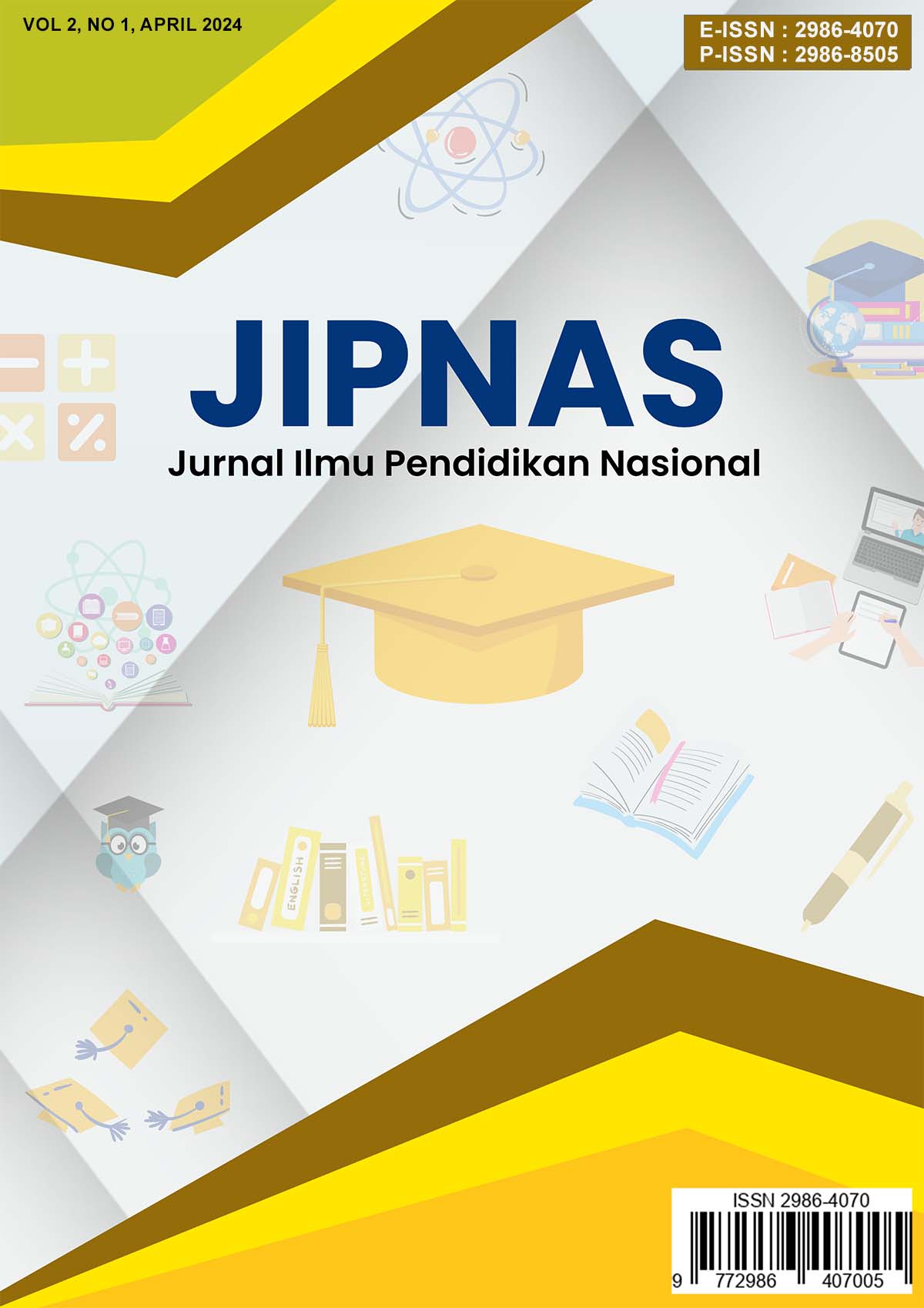Monitoring Activities On Student Abilities And Obstacles During English Learning Process
DOI:
https://doi.org/10.59435/jipnas.v2i1.136Keywords:
monitoring, student understanding, learning activitiesAbstract
This article was written to help readers understand the results of reading activities and the abilities and obstacles experienced by students during the learning process. understand the results of monitoring achievement activities and abilities and obstacles experienced by students during the learning process. Monitoring is the routine data collection and process of targeting program targets that emphasizes the process and core of change. program target-targeting process that emphasizes process and kernel changes. the quality of the services we purchase while also keeping an eye on our accounts of what is done.
Downloads
References
Brookhart, S. M. (2013). How assess higher-order thinking skills in your classroom. ASCD.
Hattie, J., Fisher, D., & Frey, N. (2017). Visible learning for mathematics: What works best to optimize student learning. Corwin Press.
Guskey, T. R. (2014). On your mark: Challenging the conventions of grading and reporting. Solution Tree Press.
Marzano, R. J. (2015). Teaching basic and advanced reasoning skills: A framework for reasoning instruction in mathematics and science, grades 3-8. Solution Tree Press.
Wiliam, D. (2011). Embedded formative assessment. Solution Tree Press.
Popham, W. J. (2018). Classroom assessment: What teachers need to know. Pearson.
Black, P., & Wiliam, D. (1998). Inside the black box: Raising standards through classroom assessment. Phi Delta Kappa Educational Foundation.
Heritage, M. (2007). Formative assessment: What do teachers need to know and do? Phi Delta Kappa Educational Foundation.
Chappuis, S., Stiggins, R., Chappuis, J., & Arter, J. (2012). Classroom assessment for student learning: Doing it right—using it well. Pearson.
Kahl, S. L. (2019). The teacher's guide to assessment: Making assessment work for the classroom. Routledge.
Airasian, P. W. (2013). Classroom assessment: Concepts and applications. McGraw-Hill.
Pellegrino, J. W., Chudowsky, N., & Glaser, R. (Eds.). (2001). Knowing what students know: The science and design of educational assessment. National Academies Press.
Stiggins, R. J. (2007). Assessment through the student's eyes. Educational Leadership, 64(8), 22-26.
Clarke, S. (2008). Active learning through formative assessment. Hodder Education.
Nitko, A. J., & Brookhart, S. M. (2014). Educational assessment of students. Pearson.
Popham, W. J. (2011). Classroom assessment: What teachers need to know (6th ed.). Pearson.
Earl, L. M. (2013). Assessment as learning: Using classroom assessment to maximize student learning. Corwin Press.
Wiggins, G., & McTighe, J. (2005). Understanding by design. ASCD.
Stiggins, R. J., Arter, J. A., Chappuis, J., & Chappuis, S. (2006). Classroom assessment for student learning: Doing it right—using it well. Assessment Training Institute.
Shepard, L. A. (2000). The role of assessment in a learning culture. Educational Researcher, 29(7), 4-14.
Popham, W. J. (2009). Transformative assessment. ASCD.
Wiliam, D. (2016). Leadership for teacher learning: Creating a culture where all teachers improve so that all students succeed. Learning Sciences International.
Brookhart, S. M., & Nitko, A. J. (2015). Educational assessment of students (7th ed.). Pearson.
Pellegrino, J. W., &
Chappuis, J., Stiggins, R. J., Chappuis, S., & Arter, J. A. (2018). Balanced assessment systems: Aligning assessment for learning, assessment of learning, and assessment as learning. Pearson.
Suhardan, Dadang, DK. 2011. Manajemen Pendidikan. Bandung: Alfabeta Prasetyo, lis, 2009 "Dinisi Monitoring dan Evaluasi. http://www.money.com/2009Monitoring evaluasi =iis prasetyo."
Downloads
Published
License
Copyright (c) 2023 Krisna Dwi Alifhia Rezky, Sabarun Sabarun, Zaitun Qamariah

This work is licensed under a Creative Commons Attribution-ShareAlike 4.0 International License.















